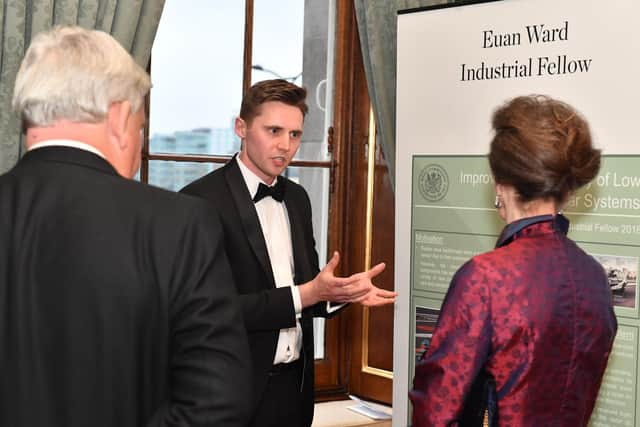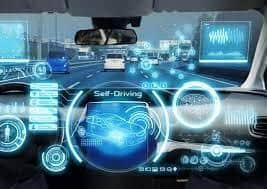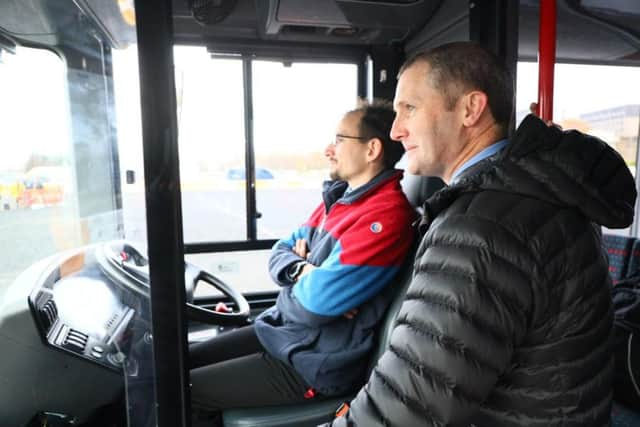Scottish engineer's radar breakthrough could speed up the arrival of 'driverless' cars
After spending months in the labs at aerospace engineering company Leonardo, Euan Ward has developed an algorithm that could transform the capability of driverless cars, through the addition of radar technology that is protected from radio frequency interference. This could pave the way for the widespread use of fully autonomous vehicles in built-up or busy areas.
At present, self-driving cars and unmanned aerial vehicles rely on conventional sensors to avoid collisions, but these can only detect threats within a certain radius. As these modern vehicles move towards full autonomy, their sensing capabilities must evolve to provide accurate measurements of their surroundings over greater distances. In order to satisfy this requirement, commercial vehicle developers have turned to radar technologies, which are very successful sensors in the aerospace, marine and aviation industries.
Advertisement
Hide AdAdvertisement
Hide AdAs the use of fully autonomous vehicles grows over the next decade, the potential for interference between systems will pose an ever-increasing threat to the safety of these vehicles. Unfortunately, the radar will not be immune to this effect, so it must learn to operate in an environment crowded with radio frequency energy.


Last week, Euan, who is based at Leonardo’s Edinburgh centre, got the chance to explain the new technology to HRH The Princess Royal, when he was one of just six ‘Royal Commission for the Exhibition of 1851’ fellows asked to present his findings at a Presidential dinner at the Fishmongers Hall in London.
Princess Anne commented that experiments using radar technology on driverless cars had so far been carried out in dry climates such as Arizona, where straight empty roads run for miles querying how his radar solution might fare on the busy, weather-beaten roads of the Scottish Highlands.
Euan said: “It was a very perceptive question, as one of the big uncertainties surrounding the driverless car is how it will handle more challenging road and weather conditions like we often have in Scotland.
“Fortunately, I was able to confirm that unlike the other sensors on the driverless car, radars are able to maintain their operational performance in inclement weather, which is also true for the techniques developed in this PhD.


"This will mean that for somewhere like Scotland, where the weather is often unpredictable, the radar sensor will become even more critical for the safety of the driverless car, which brings into sharp focus the need for us to have techniques that can guarantee its reliability.“
Euan originally undertook his PhD at The University of Edinburgh, where he developed new techniques to protect modern radar systems against harmful interference. It was during his time as a graduate at Leonardo that he became aware of the interference challenge facing modern radar sensors.
With the support of Leonardo, Euan spent four years developing technology that could allow low-cost radar systems to maintain their performance when operating in close proximity to one another. Alongside his experiments at Leonardo, his industrial career continued to grow and he was frequently invited to meetings to give his input and learn alongside experienced engineers.
Advertisement
Hide AdAdvertisement
Hide AdDuring his second year of study, Euan was awarded an Industrial Fellowship by the Royal Commission for the Exhibition of 1851 that is given to the brightest new talent emerging across the UK.


Set up by Prince Albert during the industrial revolution in 1851, it supports research in British Industry.
When the late Prince Philip took over as patron in the 1960s, he revolutionised the focus of the award to incorporate engineering, industry, art and design.
A message from the Editor:
Thank you for reading this article. We're more reliant on your support than ever as the shift in consumer habits brought about by coronavirus impacts our advertisers.
If you haven't already, please consider supporting our trusted, fact-checked journalism by taking out a digital subscription at https://www.scotsman.com/subscriptions
Comments
Want to join the conversation? Please or to comment on this article.